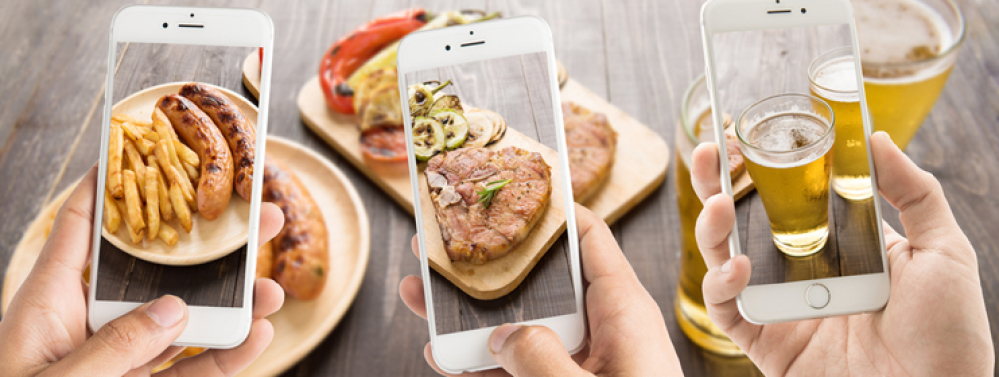How multi-unit retail brands can use Instagram to engage customers
24 Feb 2016

Instagram is the go-to social channel of the moment. It’s the fastest-growing social network in the world and has more engaged monthly users than Twitter – meaning active participants instead of just members. Each day, the average user spends 21 minutes per day using Instagram, and the ‘like’ button has been clicked around 2.5 billion times.
Naturally, this massive potential audience is very attractive to businesses of all kinds, but particularly those with a multi-unit retail structure, as the app’s user-generated content can be inspired by campaigns and steered to disperse brand messages on a nationwide basis – yet still retain a genuine grass-roots appeal.
Not used Instagram yet? Here’s a quick introduction…
Instagram is an online photo-sharing, video-sharing and social networking platform that allows its users to edit content using digital filters, often to give them a stylised appearance. Images can only be posted from a mobile device, and should be done in real time; for example, an artistic photograph of a cocktail about to be enjoyed in a bar. Posts can be accompanied by text of up to 2200 characters, but most people opt for adding short captions.
Everything that a user (or business) posts can be seen by their followers, without the requirement for a reciprocal follow – just like Twitter or Facebook Pages. There’s also the option to send direct messages to particular followers; for example, to alert competition winners or respond privately to enquiries and complaints.
Getting the most out of Instagram advertising
Instagram is free for both individuals and brands to use – but like any other social network, a large audience for each post is not guaranteed. It really depends on who’s online when you post and what you’re competing against.
However, you can pay for your posts to be more visible, including people who don’t follow you. This can be particularly useful for businesses who want to make sure their content is seen by a particular audience; you can target your posts by location, behaviour, interest and demographics.
Advertising rates are determined by what you want to achieve – i.e. attracting more followers, encouraging website visits, raising awareness of your brand – so you then pay by the relevant unit. For example, the increase in followers, website clicks or the number of people who’ve seen your posts.
Our top tips for engaging your audience via Instagram
Listen – What are people saying about your products or services? These conversations can offer valuable insights into how people relate to your brand via Instagram, both locally and nationally, which in turn could inspire new campaign initiatives.
Use relevant hashtags – You can use as many hashtags as you like on your posts, but we’ve found seven to be the optimum amount. You can either use them in context within your caption or simply list them at the end, and Instagram will helpfully show you how popular they are as you type them out.
Be sociable – As with any social media channel, don’t simply broadcast brand messages. Think about what will engage your target audience and encourage a two-way conversation wherever possible. Don’t be stingy with the follows, either – keep track of other brand accounts your audience may be interested in, and hit follow on any social influencers who fit within your target demographic.
Share user-generated content – This is a great way of including extra character and interest in your posting schedule – and also encourages communication from your users. Ask permission before sharing something and mention the user (using their @ handle) to show that you value them.
Give back – You can also make sure your users feel valued by using Instagram to thank them, either specifically (for something they’ve posted) or more generally, with both nationwide brand offers and things that may interest customers of particular venues.
Run competitions – Offering a prize and a simple, fun entry method – especially something image-based – can help grow your followers and keep your audience engaged and entertained. For example, if you have food and drink venues throughout the nation, the prize could be a voucher to be used in the winner’s nearest outlet.
Keep your bio updated – Unlike Twitter, URLs can’t be included in posts, so make sure your current campaign landing web page (or competition landing page) is accessible via your main profile details instead.
Encourage your users offline too – Remind your customers to engage with you on Instagram at the point of sale, whether it’s a notice next to the till in your regional stores or a flag in a burger saying ‘Instagram me’.
React quickly – Wherever there are online users, there will also be queries and complaints now and again, so make sure you have a team in place ready to respond and take appropriate action. Communication via Instagram is very accessible and personable, so your followers will expect your reaction to non-straightforward situations to be equally ‘human’.
For live examples of how we use Instagram for our clients, take a look at the streams for Harvester and Nicholson’s.
If you’d like to know more about tailoring Instagram use for your brand, our social media team is always happy to chat. We specialise in online marketing for businesses with multiple retail outlets or venues nationwide.
_56bb6c6b782e9.png)
Please login to comment.
Comments